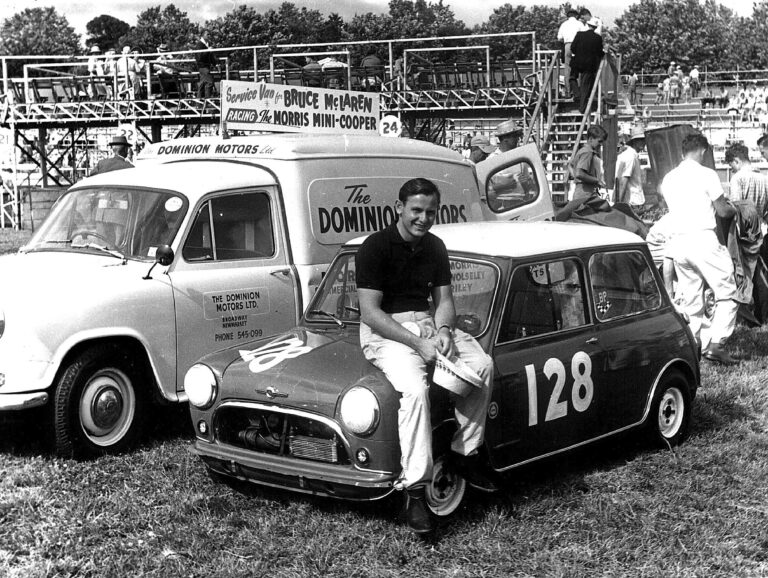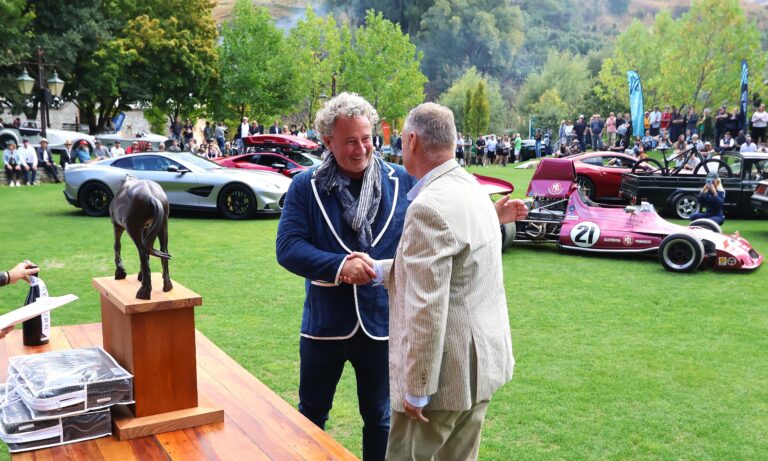It’s quite possibly unique among the thousands of ’56 T-birds produced, and its provenance is equally spectacular
By Patrick Harlow
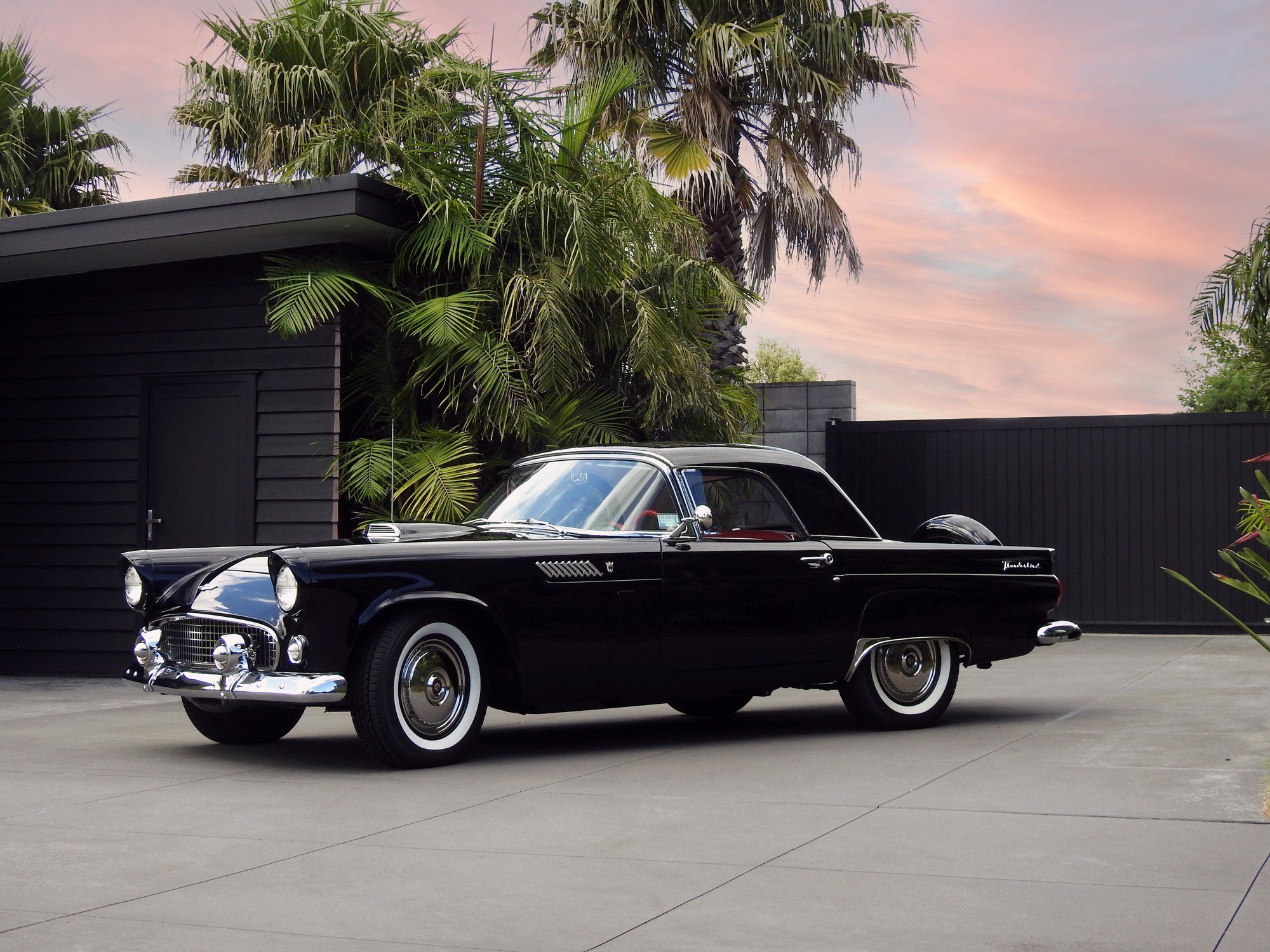
John Rae is the third owner of this classic 1956 Ford Thunderbird that only has 80,000 miles on the clock — not bad for an almost 70-year-old car. Remarkably, John has been friends with all of its previous owners.
The first owner, Carmen Schroeder, lived in Burbank, California. Carmen clocked up roughly 78,000 in the car before putting it in her son’s shed for safekeeping until it passed onto its second owners, also in California. How it got from the USA to Taranaki is an interesting story.
In 1956, Carmen and Gordon Schroeder had a lucrative automotive business manufacturing steering boxes and torsion bars for racing cars, Indy Cars and hot rods. Carmen was herself a real petrolhead and a great follower of NASCAR and Indy racing cars. She was particularly fond of Richard Petty and Jeff Gordon and amassed a huge collection of associated memorabilia. A collection she was happy to show to John Rae when he visited her in 1987.
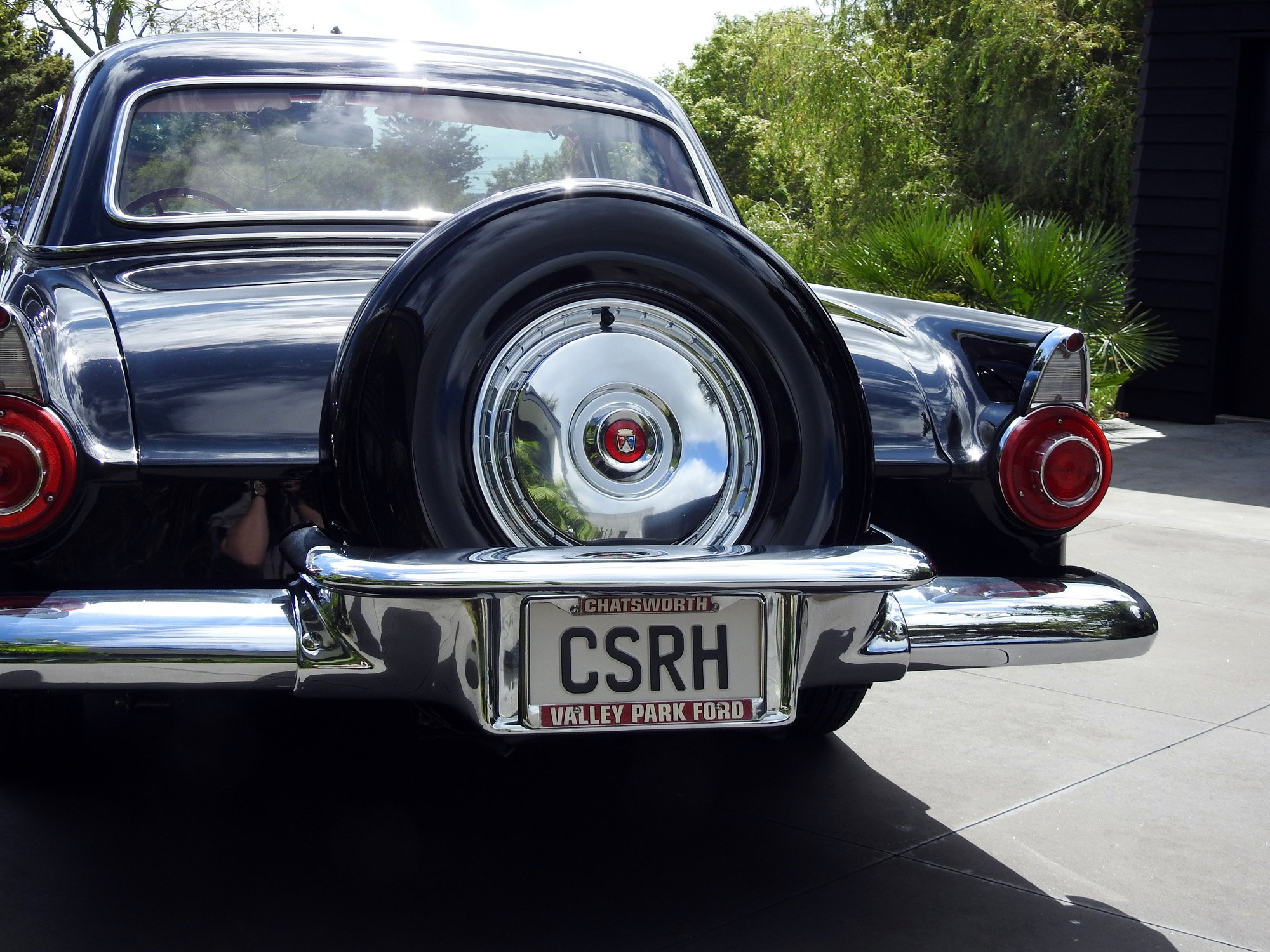
In 1956, the Schroeders were looking for a family runabout. Besides being in the torsion bar business, Gordon Schroeder had a sideline business of building Indy race cars so he had plenty of contacts in the car business. Bobby Ball was the driver of the Indy car Gordon built that finished fifth in the 1951 Indy 500. When he heard Gordon and Carmen were looking for a new car he told them he could get a good deal on a brand-new Ford Thunderbird from a friend, a Ford dealer in Phoenix, Arizona. With a bit of negotiating, he managed to get a US$600 discount on a car that would have cost over $4000. With optional extras and tax, the car was purchased for $3020.70. Ah, the good old days.
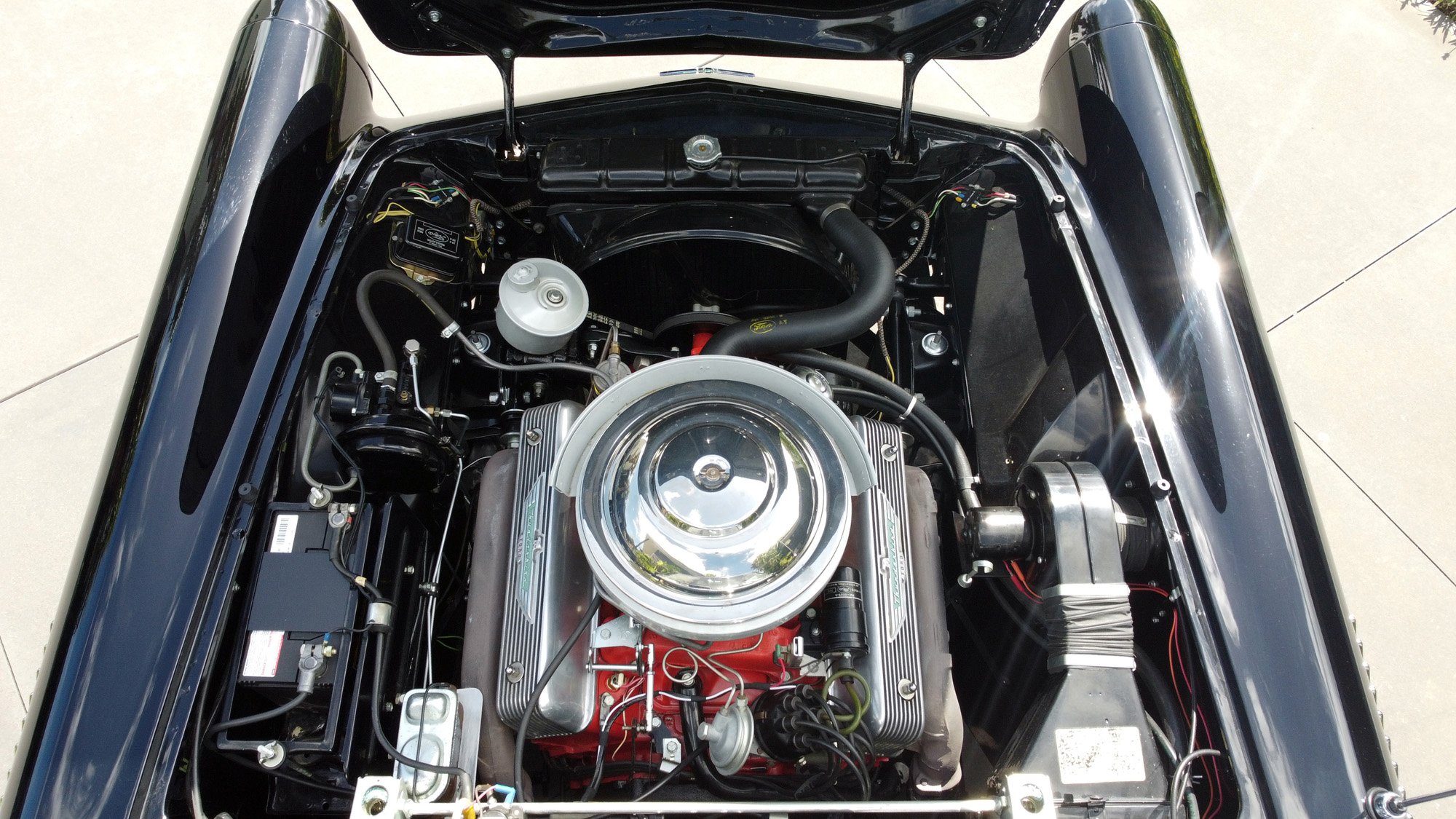
Bruce Meyer, Mr Mayers
Real drivers prefer manuals
When Carmen ticked the options list for her Thunderbird, she chose the three-speed manual gearbox over the more common automatic version. She also ticked the box that ensured the gearbox came with a cable-operated overdrive. She was a driver who liked driving; hence the engine choice was the more powerful 312 cubic inch V8 (5.0-litre) over the standard 292 cubic inch V8 (4.8-litre). Other options included an engine bay chrome dress-up kit, tinted glass, backup lights and a factory-fitted valve car radio, which still works. She included the hardtop in the purchase but decided to do without the porthole windows in the wide rear pillars ― she did not see the point of them. The porthole windows were a no-cost extra and almost all the ’56 Thunderbirds had them as they increased rear visibility — a bit, at least. Ford experts believe that these options, along with the lack of portholes, make this car pretty rare — possibly even a one-of-a-kind Thunderbird.
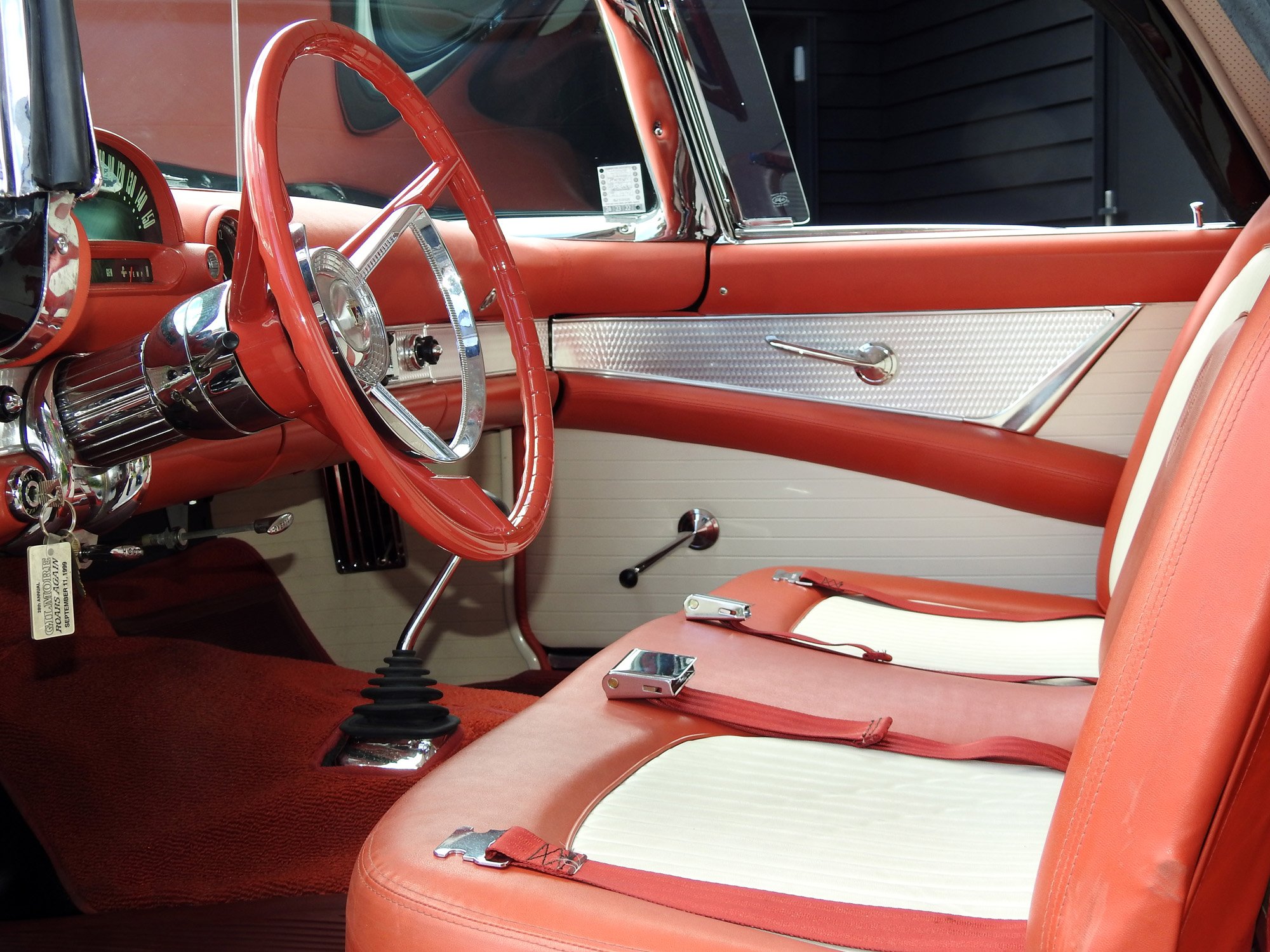
By 1956, the Thunderbird was in its second year of production. It was the halo car of the Ford brand just as the Corvette is the halo car of Chevrolet today. For the ’56 model, Ford had addressed many of the complaints from customers, such as the lack of boot space. This was solved by mounting the spare wheel on a shelf at the back of the car, and the boot space went from not quite adequate to cavernous. This method of mounting the spare was known as the ‘Continental Kit’ as it had made its first appearance on the back of Edsel Ford’s Lincoln Continental in 1942. However, this was not without its problems and was only used for the ’56 model year. To open the boot or to fill the petrol tank, the spare wheel assembly needed to be tilted backward. If its position was not adjusted correctly, the wheel could hit the rear bumper and damage the cover section or wheel cover. Other changes on the 1956 Thunderbird were front fender vents and adjustable quarter light windows in the door to improve cabin cooling.
The car became the Schroeder family runabout for many years, and Carmen’s son Gary was taught to drive a manual in it. As the car got older it was driven less and less. During the ’80s the engine started smoking so it was parked in Gary’s shed as Carmen did not want to sell it.
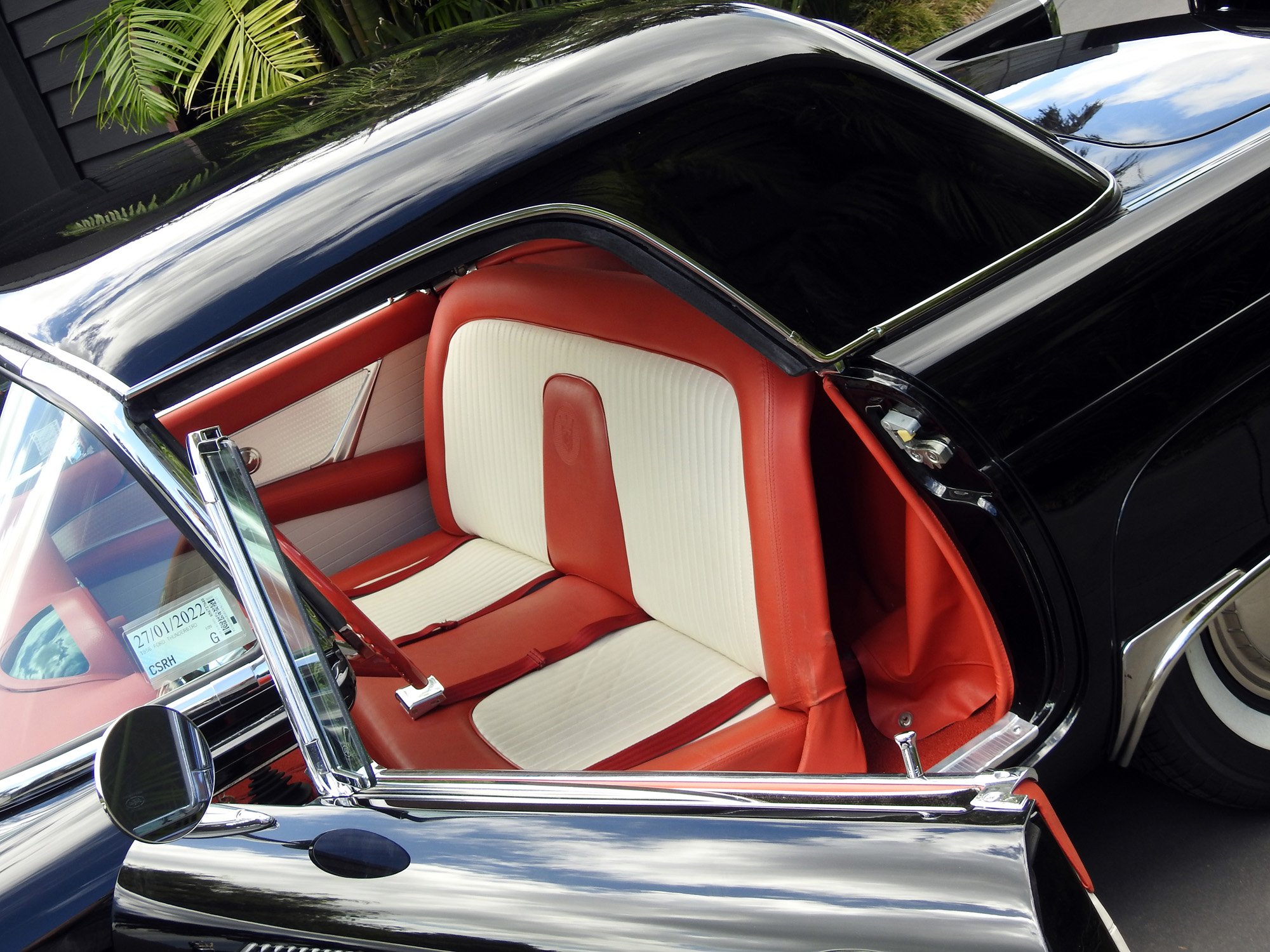
Speedway’s global reach
Meanwhile, Gary had become involved in the Speedway sport of racing TQs (Three-Quarter midget cars) and midgets in the mid-’70s. This eventually brought him to New Zealand where he would meet John Rae who was racing sprint-cars in the mid-’80s. The two became friends and visited each other in their respective countries. Naturally, as with all car people, what is stashed in sheds is always a point of interest and on his first trip to Burbank in 1987, Gary showed John the very tired and dusty Ford Thunderbird that belonged to his mother. Despite the fact the Thunderbird was parked next to an original Ford GT40 that Ford had painted in Gulf livery for display purposes, John was taken by the Thunderbird. Despite its ‘hairdresser’s car’ image, he believed Ford had built a pretty nice car.
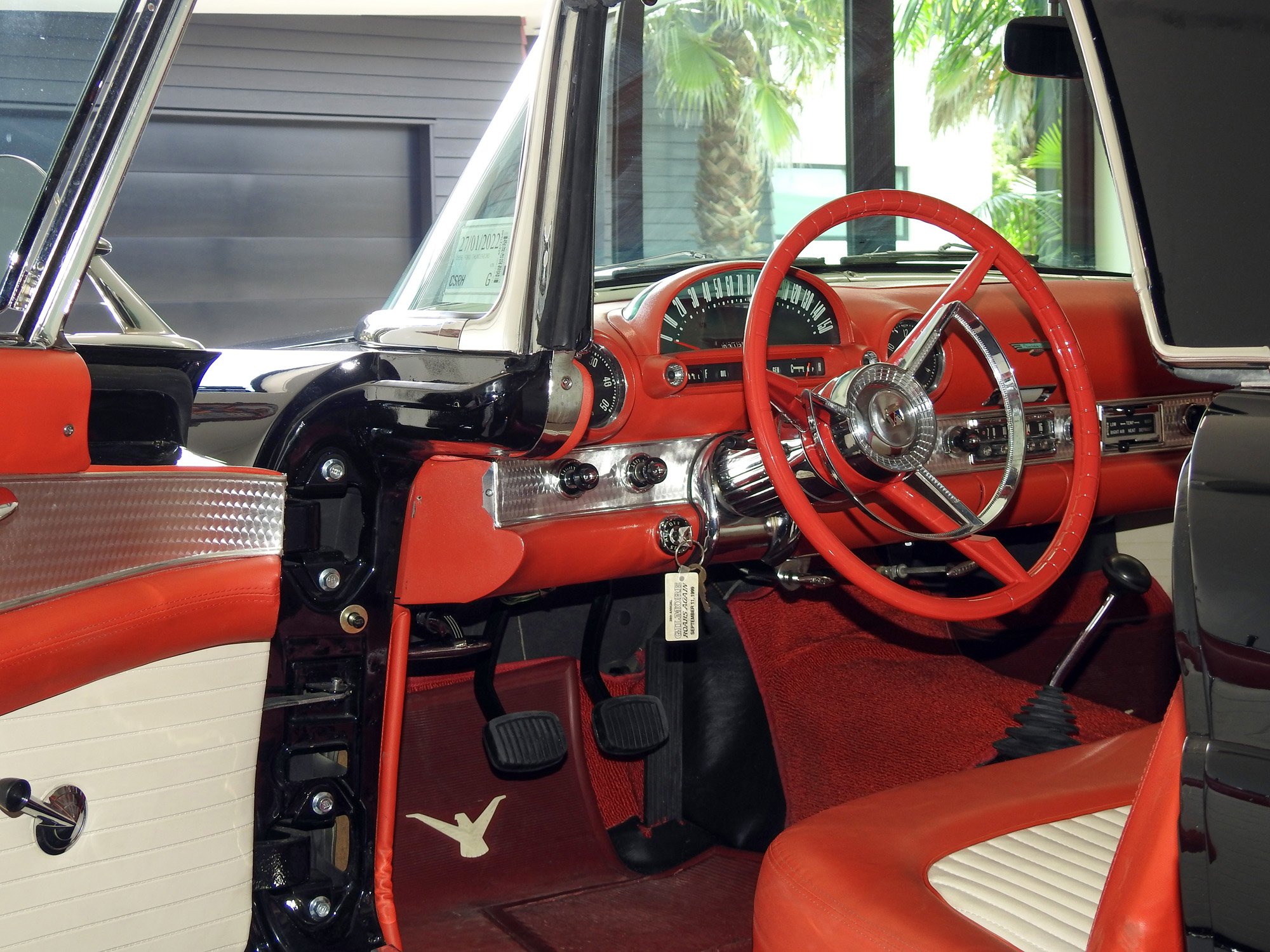
In 1995, the Schroeders sold the Thunderbird to Rich Hart, another mutual friend of John and Gary’s who also lived in Burbank. Rich carried out a full restoration of the car, adding a disc brake conversion package and swapping out the three-speed manual for a period-correct Thunderbird automatic gearbox. After being pipped at the post, whenever John visited Rich, he would ask to see the car and offer to buy it, but the discussions didn’t take hold. That was until John’s daughter, Rebecca, visited the Harts for a holiday in 2010. When she saw the Thunderbird, she fell in love with the car too. Knowing her father’s love for American cars, she decided that this was a car her father must have and she convinced him to do more than just float the idea of buying it on his next visit to the US.
In 2019, John once again visited Rich and said that when he returned to New Zealand the Thunderbird was going with him. Fortunately, this time Rich was more receptive to negotiation. In the 25 years that Rich owned the car, he only added 2000 miles to the clock, and he was getting to an age when health problems were making it difficult for him to drive it. Finally, after seeing the car over 30 years ago, John closed the deal. Included in the sale were the original manual/overdrive gearbox and sales invoice given to Carmen when she bought it new, 66 years ago.
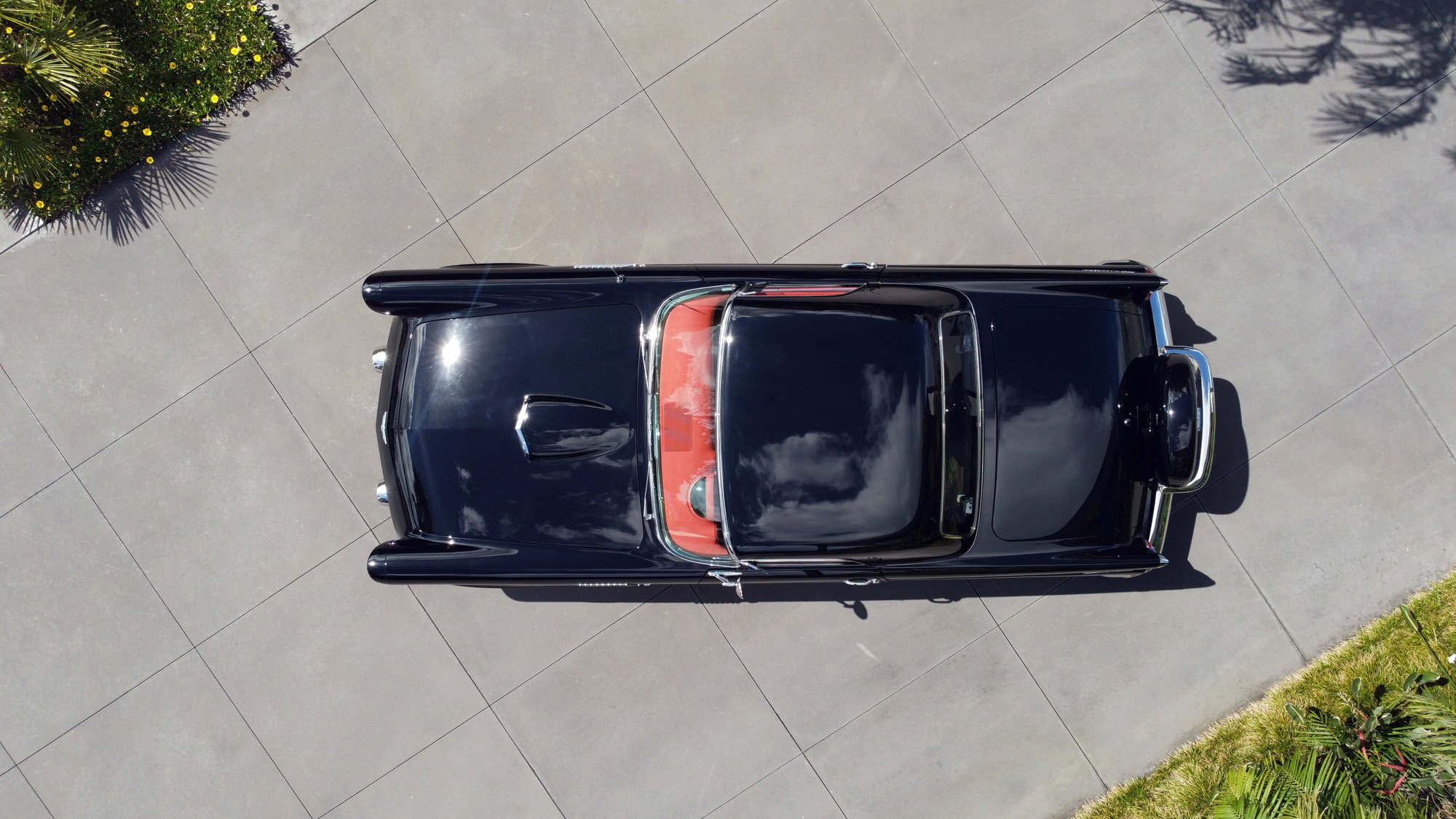
Fiat 600-based buggy
The legend lives on
Once in New Zealand, to pay homage to the previous owners of the car, John bought the number plate CSRH honouring Carmen Schroeder and Rich Hart. Sadly, both Carmen and Rich have passed away — Carmen in 2000 and Rich in 2021 — but Rich had been told about the plate and he appreciated the gesture that meant his part in preserving it would live on with the car.
John has refitted the original three-speed manual gearbox which means he now has a perfectly good Thunderbird automatic gearbox, with very low miles on it, going spare. He also changed the steering wheel to one that is period correct but two inches smaller in diameter than the original wheel. John does not understand the thinking behind the large wheel as the car came standard with factory-fitted power-steering. The smaller wheel makes it a lot easier to get into and out of the car.
John Rae is the man who inaugurated, and remains the powerhouse behind, the Americarna festival, an annual event in Taranaki since 2007. His guests at the first event included Gary and Karen Schroeder, and Rich and Carol Hart. Along with them came Karen Schroeder’s ’29 roadster pickup and Rich’s ’32 hot rod highboy roadster which they had shipped out to support John for his inaugural Americarna event. Almost 15 years later, Gary and Karen Schroeder were once again at an Americarna when they were invited to drive his mother’s 1956 Ford Thunderbird, the feature car for 2020.
Gary knows that his mother and his friend Rich would be happy knowing that their former car is in the hands of a custodian who fully appreciates it and treats it well. The last little detail worth sharing is that John knows the fourth owner pretty well too. Indeed, she has met all the other owners of the car too. When he is ready, Gary’s 1956 Ford Thunderbird will be passed on to his daughter, Rebecca.
This article originally appeared in New Zealand Classic Car issue No. 375


